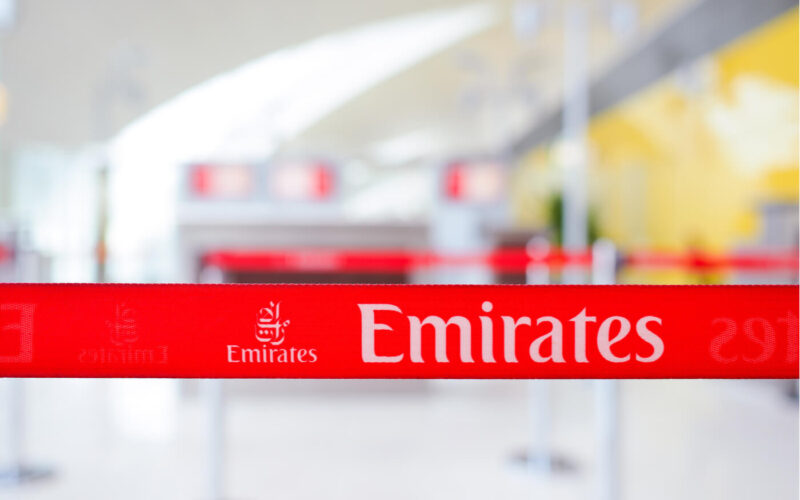Emirates has officially announced cutting the 777X deal short by a fifth and opting for Dreamliners instead. The announcement simultaneously denied and reaffirmed the previous theory that the Gulf airline’s dissatisfaction with the aircraft which is not even in the air yet, is continuously growing. Here’s how it went down:
On November 20, 2019, Emirates announced a decision to take 126 Triple-sevens instead of 150, as predetermined in the initial purchase agreement signed in 2013. The Dubai-based carrier remains the largest customer of the coming version of Boeing’s 777 jet.
Emirates Chairman and CEO Sheikh Ahmed bin Saeed Al Maktoum reaffirmed commitment to the 777X by stating: “We are […] pleased to reaffirm our commitment to the Boeing 777X programme and look forward to its entry into service,” as cited in a press release.
The “commitment” to 777X stands in sharp contrast to the news in circulation since summer 2019, as Emirates president Tim Clark took more than one occasion to express dissatisfaction with the programme, prompting speculation on possible cancellation of the whole deal.
The day before announcing the adjusted order, on November 19, Clark met with the Federal Aviation Administration (FAA) Administrator Steve Dickson to discuss the certification process for the airliner. Reportedly, the Gulf carrier is pushing for a more thorough investigation of the airliner before it is granted the certification.
“I want one aircraft to go through hell on Earth basically to make sure it all works,” said Clark as quoted by Reuters, adding “we need to be absolutely sure that as she comes together, as she starts flying, everything is done in a manner that it should be done.”
The comments, of course, come in the light of Boeing 737 MAX issues and its less-than perfect certification. Now, with Boeing still working to fix the aircraft software blamed for two crashes, a question is raised: how come the plane was granted the certification in the first place? In addition to speculation surrounding a “too cozy” relationship between the planemaker and the regulator, investigations were launched in the U.S. to determine whether the FAA is capable (has the necessary means) to determine a plane’s safety at all.
However, the troubled 737 MAX is hardly to blame for Emirates’ cooling love for the Triple Seven, as the airline has plenty of other reasons to feel dissatisfied with an aircraft which is not even in service yet.
Emirates initially expected to take the first of the 150 newest generation Triple Sevens deliveries in June 2020 and have eight 777Xs by the end of 2020. In October 2019, Clark was already certain that would not happen. At the time, speaking at The Aviation Show MEASA 2019, Clark said that it no longer looked like they would have any 777X jets in 2020.
A month before, in September 2019, Clark delivered a stern message to the aviation industry, namely plane and engine manufacturers, threatening to stop taking deliveries or considering purchases, be it Boeing or Airbus, until the airline’s requirements are met. The requirements include a “99.5%” reliability the airline expects from its fleet ‒ a somewhat impossible mission when keeping in mind the poor track record of delivering planes that are service-ready from day one.
Clark highlighted that Emirates bought new planes with the expectation that they would accommodate spotless operations for at least the first five years and could not tolerate glitches or afford costly emergency repairs that plague new models.
“I am a little bit irritated that, over the years, we as an airline, and I think as the industry, have been subjected to the requirements of the propulsion manufacturers, and to an extent the airframe manufacturers, where we are expected to deal with quality control issues and design issues, and operate these aircraft and engines, and take whatever consequences there are when they don’t work,” Clark told reporters during The World Aviation Festival in London. “We are not in a business to deal with aircraft that don’t function properly,” he was quoted as saying by Skift.
And the development of the 777X indeed had its fair share of troubles. Besides being overshadowed by the troubled 737 MAX, the service entry date of the triple seven was under threat since at least June 2019. At the time, Boeing was still hopeful to stand up to its promise for Emirates of 2020 entry date.However, it was already warning of a “significant” risk of not meeting that deadline due to the challenges with the GE9X engines.
GE Aviation revealed on June 17, 2019, that it is redesigning a part for the in-development GE9X engine, due to power the new jet, following the discovery of an issue with a component. During testing the company discovered “unexpected wear” in a part for the turbine engine, forcing the engine’s certification to be delayed by “several months”.
Initially hoping to have the maiden flight of the 777X around the time of the Paris Air Show (June 17-23, 2019), Boeing had to delay the first flight until autumn 2019.
In September 2019, the list of the 777X service entry threats grew longer. During load tests to a static frame of the plane, its cargo door blew wide open. At the time, the manufacturer responded to the news by stating it expected that the setback would not have a significant impact on the design or the test schedule.
In October 2019, Boeing stated that the 777X program was progressing through pre-flight testing and the first flight of the new Triple Seven would remain “on track” in early 2020. However, the manufacturer has since officially pushed the first delivery date to early 2021, reinforcing Emirates’ fears.

